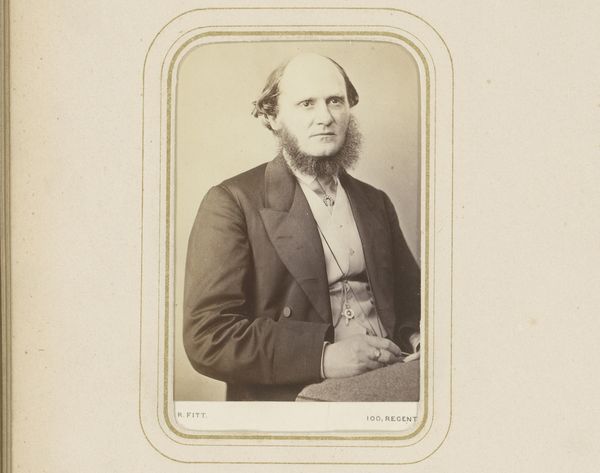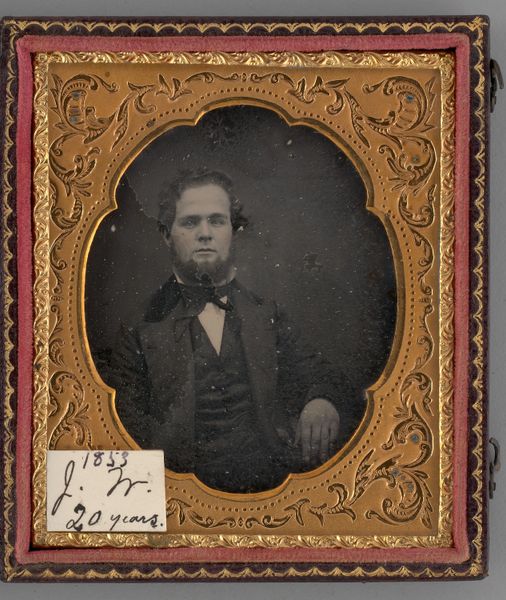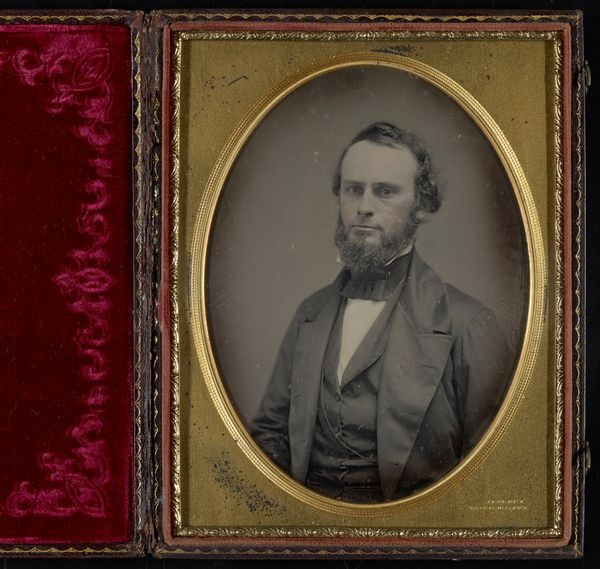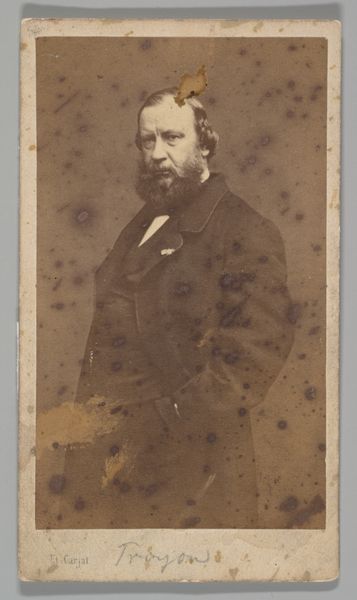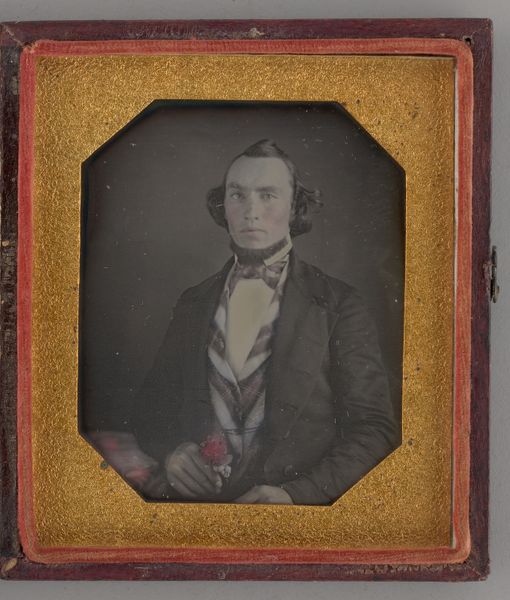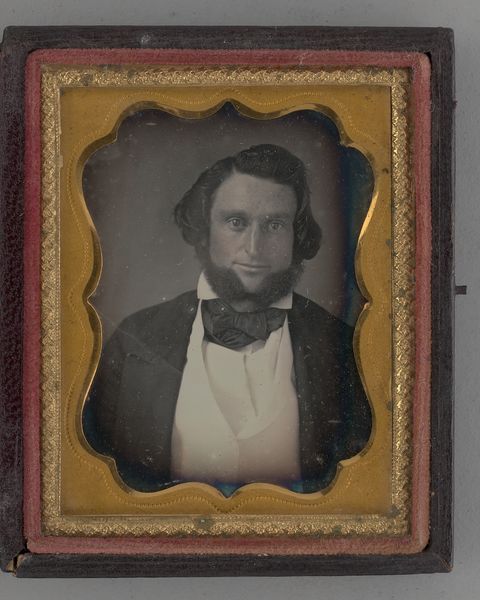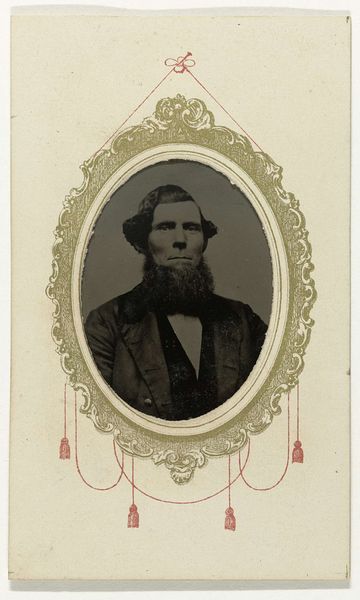
Dimensions: 8.2 × 6.9 cm (3 1/4 × 2 3/4 in., plate); 9.5 × 16.4 × 1 cm (open case); 9.5 × 8.2 × 1.6 cm (case)
Copyright: Public Domain
Editor: Here we have "Untitled (Portrait of Man)," a daguerreotype from 1857 by George D. Hamilton, currently residing here at the Art Institute of Chicago. It’s so small, so intimate. There’s a wonderful, almost sculptural quality to the man’s face…What aspects of its composition stand out to you? Curator: The most compelling feature for me lies in the interplay of light and shadow, which define the man's face and clothing. Notice the contrast between the illuminated forehead and the shadowed jawline, creating a sense of depth and contour. The man’s stark white collar and cuffs stand out, like punctuation marks in a textual field. Editor: I hadn't considered how the light functions structurally within the photograph. It does bring the face forward. It's interesting how the light creates an almost theatrical effect, spotlighting him. How do you see the framing impacting the photograph's overall aesthetic? Curator: The ornate frame, characteristic of daguerreotypes, functions as more than mere containment; it’s a structural device which affects our perception of the image. Consider its geometry and decorative elements, it serves to enhance the sitter’s perceived importance. Also the subtle patterns visible in the lower right field add texture, softening the severe angles and darker colors. Do you think the tactile surface contributes meaningfully? Editor: Absolutely. It emphasizes the object quality. The textures and subtle imperfections add another layer. The frame emphasizes the photographic surface while almost alluding to painting or drawing, a precursor to photography. I’ll certainly consider all this in my writing. Thank you! Curator: Indeed. Analyzing such minutiae yields the most revealing insights into both intention and execution, something crucial for art history writing.
Comments
No comments
Be the first to comment and join the conversation on the ultimate creative platform.
